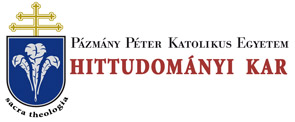Folia Theologica et Canonica 10. 32/24 (2021)
Ius canonicum
EXEGESIS ON MOTU PROPRIO SUMMORUM PONTIFICUM BY BENEDICT XVI 133 of things: from the strictest ecclesial justice and from a correct view point of what Christian liturgy is, it was necessary to correct the “atheological” positivism present in the original post-conciliar ruling in this field. The desired reconciliation should tend towards the Holy Eucharist being “the summit and source of all worship and Christian life, which signifies and effects the unity of the People of God and brings about the building up of the body of Christ”, as c. 897 CIC relates. And this absolutely excludes “all blemishes and actions that might engender divisions and factions in the Church”, as the Congregation for Divine Worship and the Discipline of the Sacraments pointed out, back in the Instruction Redemptionis Sacramentum (n. 12) dated 25th March 2004. The 1962 Roman Missal has an intrinsic value for the whole Church, which does not depend on the “demand” there may or may not be for it, as Cardinal Joseph Ratzinger wrote to Hans Lothar-Barth in a personal letter.25 And in this regard, the evaluation of SP made by Cardinal Antonio Canizares is equally accurate and clairvoyant: “The Motu Proprio makes sense even beyond the existence or not of conflict; even if there were not any traditionalists to satisfy, this discovery alone would have sufficed to justify the Pope’s dispositions”.26 These opinions are in full concordance with UE n. 8, which is where the three objectives, which the Supreme Legislator proposes in SP, are explained. According to his order of preference they are these: “a) offering to all the faithful the Roman Liturgy in the Usus Antiquior, considered as a precious treasure to be preserved; b) effectively guaranteeing and ensuring the use of the forma extraordinaria for all who ask for it, given that the use of the 1962 Roman Liturgy is a faculty generously granted for the good of the faithful and therefore is to be interpreted in a sense favourable to the faithful who are its principle addressees; c) promoting reconciliation at the heart of the Church”. It is impossible to state it any clearer. And Guido Pozzo, who at that time occupied the post of Secretary to the Pontifical Commission Ecclesia Dei, expressed himself in the same way, when describing “the deep mens which imbues the whole Pontifical document and which invites one to wholeheartedly recognise both the value of the liturgical reform of St. Paul Vi’s Missal (...) and the greatness of the liturgical treasure transmitted since centuries past but always current in the living Tradition 25 The letter is dated June 23rd 2003; cf. the works by Barth, H. L., Ist die traditionelle lateinische Messe antisemitisch? Antwort auf ein Papier des Zentralkomitees der deutschen Katholiken, Altötting 2007.2 17 and Melloni, A., Et pro Iudceis. El controvertido Oremus de Benedicto XVI, in Concilium 45 (2009) 286, note 2. 26 Canizares Llovera, A., Prólogo, in Bux, N. La reforma de Benedicto XVI. La liturgia entre la innováción y la tradíción, Madrid 2009. 13. Among others, see the appraisal of this book signed by Arocena Solano, F. M., Libros sobre el Motu Proprio Summorum Pontificum y la liturgia tridentina, in Phase 51 (2011) 93.
